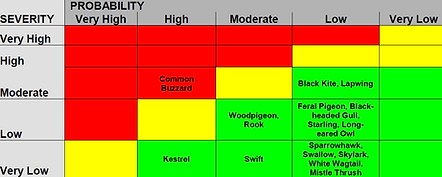
RISK ASSESSMENT
We strive to help you understand the importance of gathering, and collecting, good data. We can help you improve your understanding of risks and target your resources at sensible options to help you control those risks going forwards. We can ensure you start the program with the right processes to focus your plan on risk reduction, can deliver risk assessments and management plans on your behalf and help you ensure they are effectively implemented.
Our experience helps us help you to get it right the first time. Our staff wrote the original risk assessment procedures for airport wildlife control. We have updated and published species severity levels and have generated countless matrices and assessments for aerodromes around the globe. Let us help you target your resources more effectively and get it right the first time.


